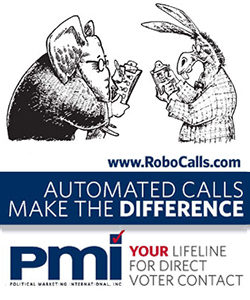(Chuck Muth) – In case you missed it, sugar producers from around the globe met in the Bay Area in early August for the annual International Sweetener Symposium.
California was a logical choice to host the meeting since it is the only state in the country with both a sugar beet and sugar cane agri-presence. Not to mention the 6,437 California jobs supported by the industry and an estimated economic benefit to the state of more than $941.5 million.
C&H Sugar operates a California-based cane refinery in Crockett, and the Spreckels sugar factory in Brawley produces nearly 300 million pounds of refined beet sugar each year. While this may pale in comparison to the economic impact of Silicon Valley or Napa Valley, it’s nothing to sneeze at either.
This year’s conference – which featured domestic and international industry leaders, U.S. lawmakers and administration officials – didn’t just discuss sugar and spice and everything nice. Instead, it focused intently on global farm policies that can adversely affect every person who is reading this with a Hershey bar in hand or over a bowl of Raisin Bran or a pint of Ben & Jerry’s ice cream.
The fact is sugar is the most subsidized agricultural commodity in the world – with developing nations providing substantial direct financial support to their less-efficient farmers, which causes global distortions in the market that could, without appropriate protections by the U.S. government, put American sugar producers out of business.
Oh, and Brazil – the “OPEC of Sugar” – would love it if that Milky Way you’re eating would cost more than a gallon of gas!
That’s because Brazil has been on an aggressive campaign to capture and monopolize the world sugar export market and already controls over 50 percent of it. To that end the South American nation – presently led by a former Marxist guerilla – has already pumped some $2.5 billion worth of subsidy funding into its sugar industry and has announced it will subsidize it, almost without limit, in the future.
The only thing protecting California sugar beet and sugar cane producers are U.S. sugar policies that limit the amount of cheap subsidized foreign sugar that can be imported into the country – policies which, by the way, didn’t cost U.S. taxpayers a dime from 2002-2012 and remains the cheapest major farm program in America.
Of equal concern to conference attendees were threats posed by Mexico.
Thanks to full implementation of NAFTA five years ago, our southern neighbor – whose government actually owns outright 20 percent of its own sugar industry – is allowed to dump unlimited amounts of cheap, subsidized sugar into the U.S. tax-free. How are California’s sugar farmers supposed to compete against the Mexican government?
Here’s how: a worldwide subsidy ceasefire.
This common-sense proposal, supported by the U.S. sugar industry, is being referred to as the “Zero for Zero” strategy. If adopted and pursued by the Obama administration and Congress, U.S. sugar farmers would lose the protections they currently enjoy, but only if foreign sugar exporters simultaneously stop artificially distorting the global sugar market with subsidizies.
Indeed, despite paying far higher wages and benefits to its workers than those paid to farmers in developing nations, U.S. sugar producers are confident they can compete in a fair and open market simply because they operate far more efficiently than their foreign competitors.
On a level playing field of government non-intervention, U.S. sugar producers are more than happy to toss aside the tariff and quota crutches.
To that end, Florida Rep. Ted Yoho has introduced a congressional resolution (HCR 39) calling for the elimination of “all direct and indirect subsidies that benefit the production or export of sugar by all major sugar-producing and consuming countries.”
Adoption of such a policy would be a victory for all concerned.
Elimination of U.S. quotas would open the domestic market here to foreign sugar producers who are currently locked out. U.S. sugar farmers would no longer be threatened by artificially under-priced competitors. And U.S. food manufacturers would have a stable, free-market price for sugar they could rely on.
And who knows, maybe someday you’ll even be able to buy a Hershey bar for 50-cents again! That is, if food manufacturers will pass along the lower sugar prices to grocery shoppers.


